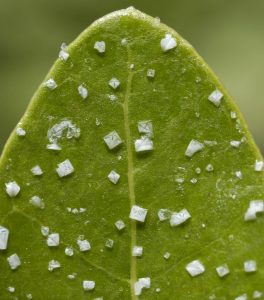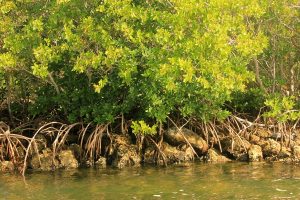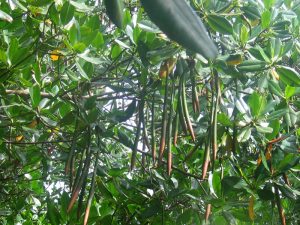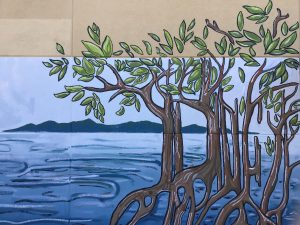Mangroves

Florida’s mangrove trees are essential to its coastal ecosystem. In fact, their trunks and “knees” provide a perfect playground for lots of other creatures, including some endangered species. The spoonbill, for instance, often finds shelter among its roots and branches, but other species such as smalltooth sawfish, manatees, hawksbill sea turtles, Key deer, and the Florida panther depend on the mangroves during different stages of their life cycles.. Mangroves are able to live in saltwater but extract the freshwater that they need to survive; some types secrete the excess salt through their leaves, while others are able to block its absorption. Their “breathing” roots (or pneumatophores) sometimes extend upward through the water for extra oxygen absorption. Although there are over fifty types of mangroves internationally, there are three types found in Florida: the Red (most common), Black, and White varieties. The University of Florida has a handy guide you can use to determine which type of mangrove you are seeing.

Mangroves are able to reproduce quite uniquely by being viviparous (meaning they produce live young) – their seed pods have already begun embryonic development when they drop off the tree. Mangrove forests help protect against erosion, filter pollutants from the water and air, and offer a buffer to the shore from wind and storm damage. However, over the past ten years, the Tampa Bay area has lost 44% of its coastal wetlands due to human interference. Since they are tropical plants, changes

in the environment due to global warming can have a significant effect on their ability to thrive. Visit the mangroves at Palm Harbor’s own Wall Springs Park to get first-hand experience with this uniquely Florida tree.
Are you a fellow nature lover? If so, please send any photos you take locally of flora and fauna to art@phlib.org and they may be featured on our website!
References
“Florida Mangroves.” Wikipedia, Wikimedia Foundation, 12 Nov. 2020, en.wikipedia.org/wiki/Florida_mangroves.
“Florida’s Mangroves.” Florida Department of Environmental Protection, floridadep.gov/rcp/rcp/content/floridas-mangroves.
Milligan, Lara. “What Kind of Mangrove Is That?” UF/IFAS Extension Pinellas County, 20 Apr. 2019, blogs.ifas.ufl.edu/pinellasco/2019/04/20/what-kind-of-mangrove-is-that/.
“Why Are Florida’s Mangroves Important?” The Nature Conservancy, 4 May 2020, www.nature.org/en-us/about-us/where-we-work/united-states/florida/stories-in-florida/why-mangroves-important/.

